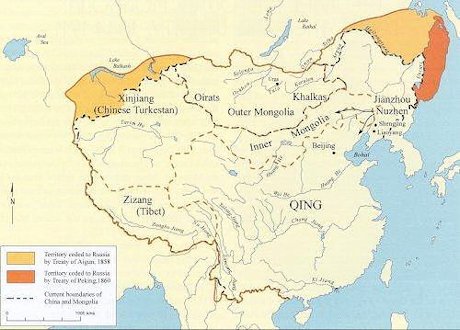
|
14. Qing Dynasty Map
(AD 1644 to 1911 - 267 Years) Although the Manchus were not Han Chinese, they realized that to dominate the empire they would have to do things the Chinese way and so they retained many of the institutions of the Ming and earlier dynasties. Ever suspicious of Han Chinese, the Qing rulers put into effect measures aimed at preventing the absorption of the Manchu into the dominant Han Chinese population. Han Chinese were prohibited from migrating into the Manchu homeland, and Manchu were forbidden to engage in trade or manual labor. Intermarriage between groups was forbidden. The Qing regime was determined to protect itself not only from internal rebellion but also from foreign invasion. The Manchu conquered Mongolia in the late seventeenth century and Tibet in the eighteenth century. The chief threat to China did not come overland, however, but by sea. Western traders, missionaries, and soldiers of fortune began to arrive in large numbers. The empire's inability to evaluate correctly the nature of the new challenge or to respond flexibly to it, resulted in the demise of the Qing and the collapse of the entire millennia-old framework of dynastic rule. Back to Chinese Dynasty Page 2 ⇦ Back to 13. Ming Dynasty On to 15. Republic of China Dynasty ⇨ |
|
Qing Dynasty Map
|